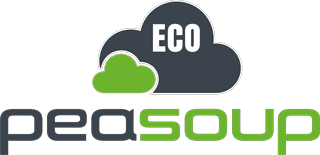Table of Contents
How to Connect PeaSoup S3 to MSP360 Standalone Backup
Follow these steps to configure MSP360 Standalone Backup to use PeaSoup S3 as a cloud storage target for backups. PeaSoup’s S3-compatible API allows it to be configured similarly to Amazon S3 for reliable cloud-based backups.
Prerequisites
- PeaSoup S3 Access: Ensure you have the following details:
- Access key
- Secret key
- Bucket name
- PeaSoup S3 endpoint URL https://s3.eu-west-1.peasoup.cloud
- MSP360 Standalone Backup installed and configured with administrative access.
Steps to Connect PeaSoup S3 to MSP360 Standalone Backup
- Open MSP360 Standalone Backup:
- Launch the MSP360 Backup application on your machine.
- Log in using your MSP360 account or access the standalone backup tool directly.
- Navigate to Cloud Storage Configuration:
- In the MSP360 Backup interface, go to Backup Storage > Cloud Storage.
- Click Add New Storage Account to configure PeaSoup S3 as your backup storage destination.
- Configure PeaSoup S3 as Cloud Storage:
- Select Amazon S3-Compatible from the list of available cloud storage providers.
- Enter the following PeaSoup S3 details to configure it as your storage account:
- Display Name: Enter a descriptive name for the storage account (e.g., PeaSoup S3).
- Service URL: Enter the PeaSoup S3 endpoint https://s3.eu-west-1.peasoup.cloud
- Access Key: Enter your PeaSoup S3 access key.
- Secret Key: Enter your PeaSoup S3 secret key.
- Bucket Name: Choose an existing bucket or enter the name of the PeaSoup S3 bucket where your backups will be stored.
- Click OK to save the storage account configuration.
- Create a Backup Plan:
- Once PeaSoup S3 is configured as a storage target, create a new backup plan by navigating to Backup Plans > Create New Plan.
- Select the data you want to back up, such as files, folders, databases, or system images.
- During the setup process, choose PeaSoup S3 as the backup destination.
- Configure Backup Options:
- Set backup options based on your needs, such as:
- Schedule: Choose the frequency for your backups (daily, weekly, etc.).
- Retention Policy: Define how long you want to retain backups before they are deleted or archived.
- Compression and Encryption: Enable data compression to reduce storage size and encryption to protect sensitive data during backups.
- Click Next to continue the backup plan configuration.
- Set backup options based on your needs, such as:
- Run and Monitor the Backup:
- After configuring the backup plan, click Run Now to start the backup process or let it run according to the schedule you set.
- Monitor the backup progress in the MSP360 Backup interface to ensure data is being successfully uploaded to PeaSoup S3.
- Restore Data from PeaSoup S3 (Optional):
- If you need to restore data from PeaSoup S3, navigate to the Restore section in MSP360 Backup.
- Select the backup stored in PeaSoup S3, and follow the prompts to restore the data to its original location or a new one.
Optional: Set Up Retention Policies
- In the MSP360 Backup interface, you can configure retention policies for the data stored in PeaSoup S3. This will help manage storage costs by automatically deleting older backups after a set period.
Notes
- Ensure that MSP360 Backup has internet access and can connect to PeaSoup S3 by verifying your network settings and firewall rules.
- PeaSoup’s S3-compatible API enables seamless integration with MSP360, providing reliable and scalable cloud-based backups.
